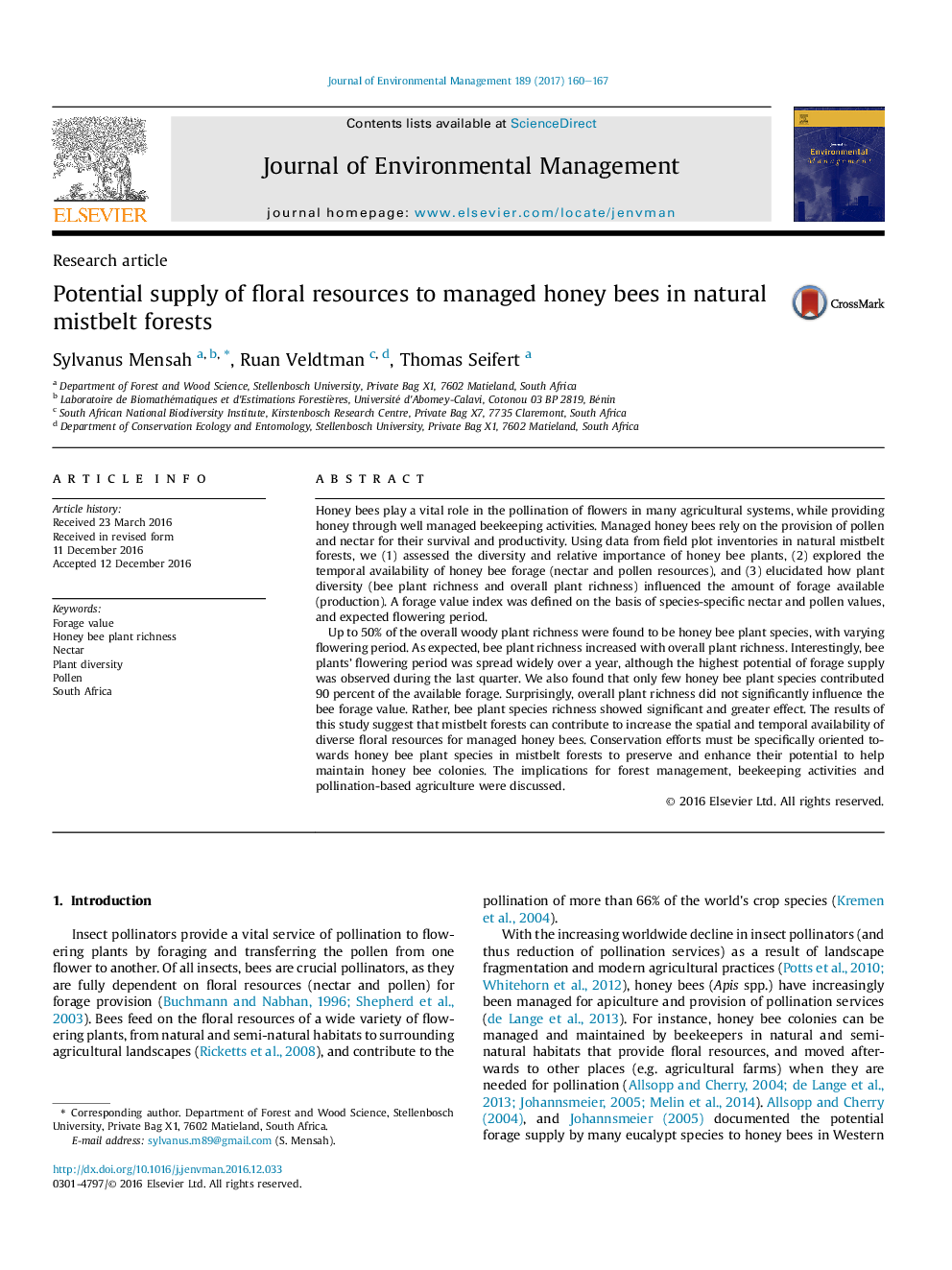| Article ID | Journal | Published Year | Pages | File Type |
|---|---|---|---|---|
| 5117074 | Journal of Environmental Management | 2017 | 8 Pages |
Abstract
Up to 50% of the overall woody plant richness were found to be honey bee plant species, with varying flowering period. As expected, bee plant richness increased with overall plant richness. Interestingly, bee plants' flowering period was spread widely over a year, although the highest potential of forage supply was observed during the last quarter. We also found that only few honey bee plant species contributed 90 percent of the available forage. Surprisingly, overall plant richness did not significantly influence the bee forage value. Rather, bee plant species richness showed significant and greater effect. The results of this study suggest that mistbelt forests can contribute to increase the spatial and temporal availability of diverse floral resources for managed honey bees. Conservation efforts must be specifically oriented towards honey bee plant species in mistbelt forests to preserve and enhance their potential to help maintain honey bee colonies. The implications for forest management, beekeeping activities and pollination-based agriculture were discussed.
Related Topics
Physical Sciences and Engineering
Energy
Renewable Energy, Sustainability and the Environment
Authors
Sylvanus Mensah, Ruan Veldtman, Thomas Seifert,
